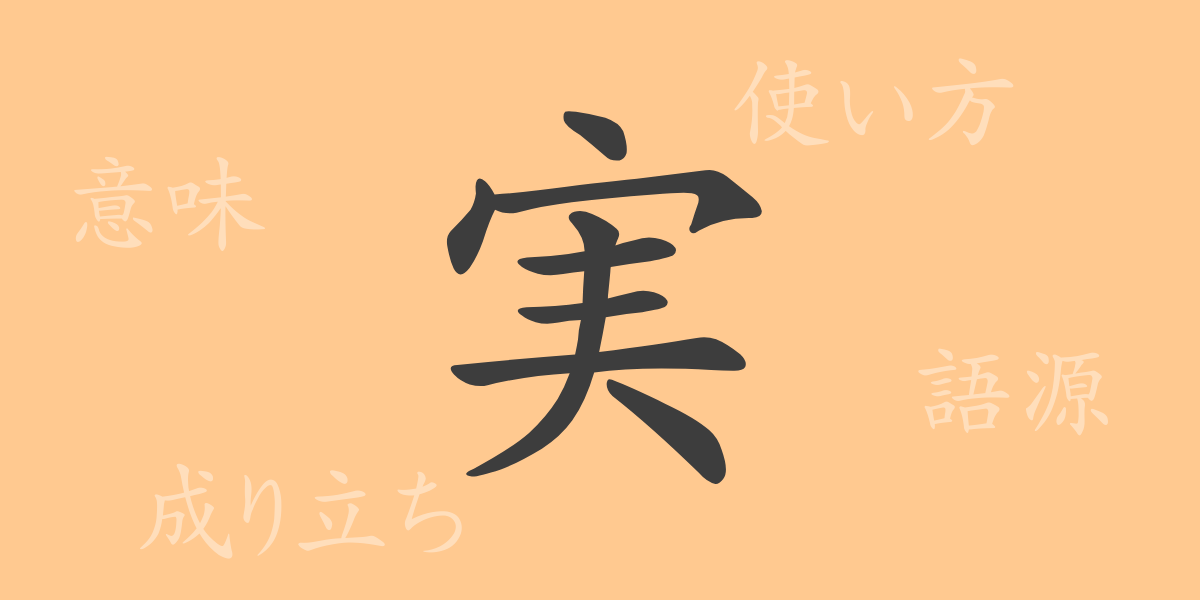There are numerous kanji characters in the Japanese language, and among them, “実(じつ)” is particularly rich in meaning. As a commonly used kanji, “実(じつ)” encompasses various aspects that can be both intuitive and abstract, such as the essence of things, truth, and fruits. This article delves into the origins, meanings, usages, readings, stroke counts, and radicals of “実(じつ),” as well as explores idioms, expressions, and proverbs involving this kanji. By exploring the depth of the Japanese language, let us delve into the world of “実(じつ).”
Origins of 実 (Etymology)
The origin of the kanji “実(じつ)” dates back to ancient China. It is believed to have originated from pictographs representing tree fruits, depicting the image of fruits growing on a tree. Over time, “実(じつ)” came to encompass not only tangible entities but also abstract meanings such as truth and actual conditions. In Japan, along with the transmission of kanji culture, “実(じつ)” has been used in various contexts, appearing in unique Japanese idioms and proverbs.
Meanings and Uses of 実
The kanji “実(じつ)” has a variety of meanings and uses. The most common meaning is “fruit,” referring to the seed or core of fruit. It is also used as a verb, such as in “実る(みのる)” to describe the process of bearing fruit or achieving results. Furthermore, “実(じつ)” is used as a noun to indicate facts, truths, or actual situations, as seen in words like “実情(じつじょう)” and “実績(じっせき).” This versatile kanji spans from concrete objects to abstract concepts.
Readings, Stroke Count, and Radical of 実
The basic information for the kanji “実(じつ)” is as follows:
- Readings: The on’yomi (音読み) is “ジツ,” and the kun’yomi (訓読み) includes “みのる,” “み,” and “みの.”
- Stroke count: “実(じつ)” has a total of 8 strokes.
- Radical: The radical is “宀” (うかんむり), indicating a connection to a roof or building.
Idioms, Phrases, and Proverbs Using 実
There are numerous idioms, phrases, and proverbs that include “実(じつ),” each carrying deep meanings. For example, “実を取る(じつをとる)” means to focus on the essence or truth rather than being misled by appearances. “実力(じつりょく)” and “実績(じっせき)” refer to true abilities and past achievements, respectively. The proverb “実るほど頭を垂れる稲穂かな(みのるほどこうべをたれるいなほかな)” teaches that the more successful or accomplished one becomes, the more humble one should be.
Conclusion on 実
The kanji “実(じつ)” has acquired many meanings and uses throughout its long history, from its formation to the present day. Encompassing both physical entities and philosophical concepts, this character symbolizes the richness of Japanese expression. Understanding kanji like “実(じつ)” helps to enrich one’s linguistic experience by grasping the profound meanings embedded in the language.

























